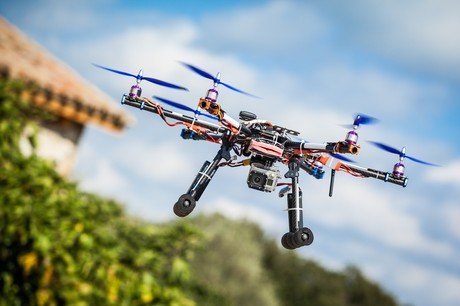It’s a game of drones: proposed legislation on UAVs sees support from industry personnel

Not all drones are of the killing and destruction kind – just ask photographer Tim Whittaker, who uses his drone to cover everything from television news to disaster zone work. It’s a burgeoning market that has seen massive expansions over the last few months, and projects such as Google’s drone delivery service Project Wing has captured the consumer market’s attention.
There’s big money at stake – one US research company estimates the total unmanned aerial vehicle market to be $US6.8 billion this year and $US10.6bn by 2020. But with the development of the market has comes intense scrutiny of the regulation around it. In the US, drone proponents are calling for the tough line on UAVs to be relaxed – bringing them in line with the overall National Airspace System rules.
Because of the tough legislation in the US, a recent report from the Association for Unmanned Vehicle Systems International estimated the US is losing more than $US10bn ($NZ13bn) in potential economic impact with each year the integration of UAV systems into the NAS is delayed. That’s the equivalent of $US27.6 million per day.
For New Zealand, it’s going the other way. Until now, regulation of drones has been pretty relaxed, and the ready availability of cheap drones – ranging from hobbyist toys at $60 to serious professional camera drones just over the $2,000 mark, all on TradeMe – has meant everyone from aerial photography enthusiast grandpa Joe to the five-year-old next door has the ability to fly something high up in to the air.
But the powers-that-be worry that people with little or no understanding of aviation could potentially be making our skies unsafe for existing planes and other things that fly in the air. Which is why the Civil Aviation Authority is proposing stricter controls and laws for people that want to fly drones.
The legislation has proposed professional drone operators be required to become certified, not only in the use of drones, but also the necessary aviation laws surrounding flying. If the drone is used in no fly or other potentially “hazardous” zones, a special permit request has to be put in, and a permit is needed for scenarios such as night-time flying or filming crowded events.
The CAA draft proposal also puts new requirements on the construction of the “aircraft”, as drones are now called. At present there are no internationally recognised design standards, but the CAA has said it “will still be carrying out its own case-by-case assessment to determine whether the applicant has met these standards and whether they are appropriated for the proposed operations and equipment used.”
Robert Harrison, director of Palmerston North-based Hawkeye UAV, which develops UAVs for farm mapping, welcomes the changes. Harrison says increased regulation is to be expected as the industry expands, and moves have been well signalled.
“It’s the same as firearms,” he says, referring to the proposed legislation. “I just don’t see it as an adversarial situation.
“More regulation equals a far safer industry. The process has been fair and robust, and the CAA has to cater to a bigger picture than just the drone industry.”
Harrison believes ultimately the challenge will be on how to cater to all aspects of the industry and providing a safe environment for pilots of all kinds, whether it is of drones or fixed-wing airplanes.
However, photographer Tim Whittaker says what the legislation CAA has proposed actually doesn’t do much, except now the onus of the law is placed on professionals who require a drone for their business.
“It’s basically a status quo,” he says.
“My main concern is that [professional drone operators] are bound by the same rules as amateurs, but [amateurs] are not required to understand the laws. The general public needs a big education campaign; it’s pointless for rules if the rules aren’t being implemented.”
Both Harrison and Whittaker welcome the proposed legislation, but Whittaker reckons it still needs more work to be a fully viable proposal that guarantees safety in our skies from our drone overlords.
Whittaker says the CAA is targeting the wrong group – the pros and not the amateurs. As a licensed and certified pilot, he says the present situation worries him.
“Flying a fixed wing is going to be very scary knowing that there is a drone about.”
Many consumer drones, such as the popular DJI Phantom 2 Vision+, can easily reach more than 900ft in the air, whilst some more heavily geared drones have gone up to 11,000ft. They can be potentially fatal if the drone is caught in the rotator blades of an aircraft flying low.
And it’s that capability that has both the CAA and drone-pilots worried alike, especially when it’s in the hands of a boy who’s helping his farmer dad look for lost cattle and don’t know the finer details of the law.
But the drone craze is certainly not going away, especially when New Zealand’s leading industry, farming and agriculture, stands to benefit the most. Livestock, crop and environmental monitoring will all be readily accessible with drones, especially considering New Zealand’s rugged landscape.
The draft for the new legislation is currently available for submission until 31 January 2015, and can be read in detail here.




